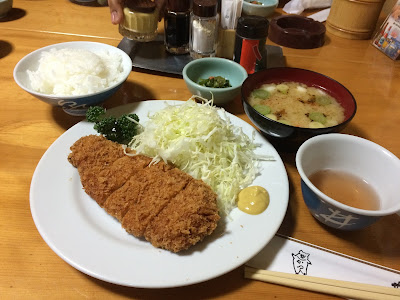Ramen, Soba, Udon and More
 For those less familiar with Japan, when you think of food you probably think sushi. As you dig deeper, you will discover it is so much more! Like the French, Japanese are passionate about food and celebrate the wide variety of their eating choices in small and intimate surroundings. Where they differ from classical French is their Zen philosophy of keeping it simple. No elaborate sauces for them! They focus on putting together the best seasonal produce and enhancing their natural flavours with delicate sauces and seasonings.
For those less familiar with Japan, when you think of food you probably think sushi. As you dig deeper, you will discover it is so much more! Like the French, Japanese are passionate about food and celebrate the wide variety of their eating choices in small and intimate surroundings. Where they differ from classical French is their Zen philosophy of keeping it simple. No elaborate sauces for them! They focus on putting together the best seasonal produce and enhancing their natural flavours with delicate sauces and seasonings.
We had connected with locals in both Tokyo and Kyoto to show us around their cities. Our host in Tokyo, an elderly gentleman, gave us much insight into their culture, daily lives and customs. For lunch, he took us to a Tonkatsu restaurant. Tontaktu is a breaded, deep-fried pork cutlet; it was served with a heap of finely shredded cabbage, a bowl of rice and miso soup. We hungrily wolfed this down with some beer sitting cross-legged on low, traditional dining tables.

We did a lot of soups in Japan, and for good reason. Not only are noodle soups a favourite among all of us, there is so much variety in Japan. We had even more reason on days when the weather was cold and rainy.

Ramen, soba and udon are the three most popular varieties of noodles in Japan. Ramen noodles are pale yellow and thin. They are wheat-based and made their way into Japan from China a long time ago. Soba made from a mix of buck-wheat and wheat flour is brown in color while Udon is thicker, white and made of wheat flour. Each of them have a very distinct texture and feel.
Ramen shops are plenty and everyone has their own favorite. While miso-based and tonkotsu (pork-bone based) broths are popular, there as as many variations as there are ramen shops. Nothing beats the taste of a piping hot ramen with a liberal helping of fatty pork slices on a cold chilly day.

Soba and Udon too are served in interesting variations. I had one that was topped with fresh prawn tempura. There were some really spicy options, such as Onimaru in Kyoto, which dares you to try their most spicy one and survive! As you can see above it looks lethal and I was wiping my tears frequently as I dug into it!


Tempura and Teppanyaki, Sashimi and sushi, Udon and Soba, there is so much you can try. This time we did not do Kaiseki, a formal multi-course dinner that is elaborate like the Waswan of the Kashmiris.
We also tried some of their popular street food at the temples and shrines. Thokoyaki, a batter-baked octopus served hot, red bean desserts at the Kabuki theater, and large succulent pieces of bamboo-shoot on sticks.



One day we walked into a very chic restaurant not knowing what to expect. However, they completely delighted us with the food. The squid starter was a sign of good things to come, and the Kobe beef was out-of-the-world with its splendid combination of flavour and silkiness on the palate. We ended that night with a delightful dessert of matcha tea ice-cream.
Next post in this series: A Trip to Kyoto
Previous post in this series: A Holiday in Japan


No comments:
Post a Comment